You have probably heard that completion rates of the average online course range between 5 and 15%. This is true, however there are ways to change this into a 100% completion rate.
Let’s look at how this can be achieved
1: High touch support
This is a game changer when it comes to the completion of courses. High touch support means that the learner is not just enrolled into a course and left to their own devices. It comprises of communication on a continuous basis and someone checking in on every activity milestone. For example: When a learner is enrolled to a course, they are sent a welcome communication. When activities are due, for example assessments or quizzes, communication is sent out to remind the learner of the due date. If learners miss the due date deadline, they are once again contacted to see how they can be assisted in completing this activity. The communication is also two way, which means that if the learner is unsure of something and needs assistance, they can ask for help. Yes, this does mean that someone from your organisation or an external provider would need tovailable to perform this vital task, but the result is worth the input.
2: Keep your learners engaged
To be honestome of us may need motivation to get our neural paths stimulated for learning. Some people are natural academics and the thought of learning excites them. For others, it is something they need to do and may not want too. So, keeping learners engaged is important when looking at your online course structure. Make sure you keep it relevant, informative and make use of short bursts of information which is repeated through activities and facilitator engagement.
3: Offer an incentive
If the online learning is part of a business skills development requirement, it is a great idea to offer some form of incentive. It does not always have to be monetary. The incentive can be in the form of earning badges on the online platform. For example, if a learner has earned a certain number of badges, they can earn a certificate. The certificate can be added to their personal resume. It could be in the form of a competition, providing a prize for successful completion. Another great way to incentivise is to make it part of a learner’s Personal Development Plan, so completing courses assists them in reaching set goals. The incentives are little motivators that can mean a lot, even if it is only bragging rights.
4: Encourage learner participation
As online learning is not in the classroom and there isn’t a facilitator actively observing if you are completing an activity, some learners may not participate. Here is how you change this!
Schedule your online courses to run on specific dates. Set up a calendar which has a specific start and end date. This provides structure and holds learners accountable for putting sufficient time and planning into participating in the online course.
Encourage participation and completion by creating group activities, provide a platform for discussions with the facilitator and other learners.
Keep communication channels open for the learners and facilitators to interact by making use of chat rooms, WhatsApp, and live webinars.
5: Make use of in-platform tools
What also contributes to high completion rates is to encourage learners to check their grade books. Have a learning progress bar on the online platform so that each learner can track their progress. Bulk e-mail reminders can be sent at any time during the course duration to encourage learners and to remind them of deadlines. Set calendar reminders and milestones for each course. Use the tools purposed for facilitator led activities and facilitator led marking sessions.
High course completion rates are possible when you are serious about learning and achieving good results. Don’t just put a course online – make it an experience!










